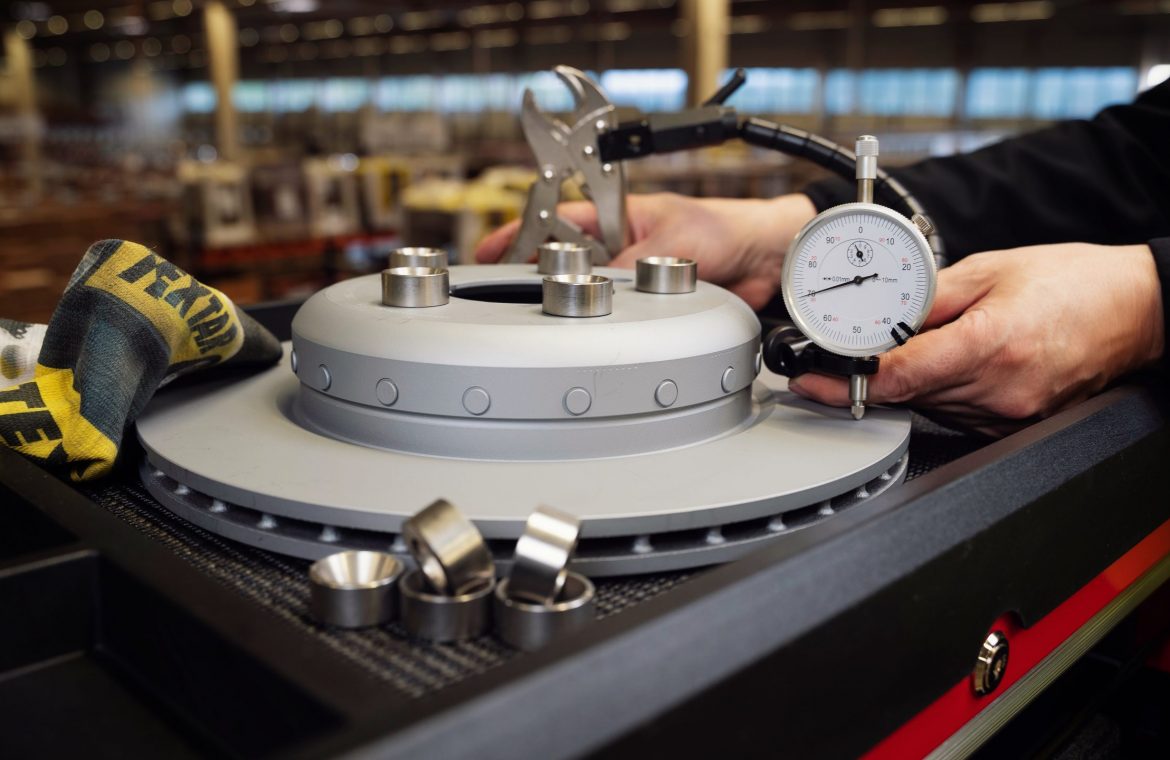Vibrations of the steering wheel or other vehicle components can occur in both old and new cars. Regardless of the age of the car, it should not be underestimated.
They not only reduce driving comfort and have a negative effect on the steering and suspension, but also indicate that something is wrong with the car. One of the causes of vibration is the presence of problems in the brake system, that is, the lateral flow of the brake discs. Rapid detection and repair of problems has a significant impact on driving safety.
Causes of lateral flow of the brake disc
Vibrations related to the brakes transmitted to the steering can occur from the vehicle’s suspension at different speeds. Its intensity can vary from almost imperceptible to very strong.
Problems can arise for a number of reasons. The salt used in road services accelerates the wear of brake system components. The detergents used to wash the car remove grease from the pillow guide and even dissolve the rubber from the dust seals. Brake problems are often caused by incorrect installation of brake discs or pads.
The maximum allowable side-effect of the disc is specified by the vehicle manufacturer and must be checked in the vehicle’s manual. It is important during operation to prevent the brake discs from overheating. Avoid prolonged braking at high speed. Hot discs should not be cooled suddenly, as this can cause them to deform. Remember that by taking care of the good condition of our brake discs, we care about our safety. That is why errors in the braking system should not be underestimated – recalls Wojciech Sokowski, technical trainer of TMD Friction, owner of the Textar brand.
Serious errors made during assembly may be noticed by the driver shortly after a service visit, but in most cases minor errors will appear after driving only about 2,000 km. Here is an example. The permissible lateral runoff of the disc of a particular vehicle is 0.05 mm, but because this phenomenon is not verified by the workshop, it becomes 0.1 mm invisible to the naked eye. Exceeding the permissible norm will cause the local disc to narrow over time, as well as knock on the steering wheel and pulsate the brake pedal. Often, several of the listed abnormalities occur simultaneously. Then even a set of new or improperly fitted discs and pads on poorly maintained calipers or the entire braking system can be destroyed very quickly – at a distance of several kilometers -.
Symptoms of a lateral run-off of the brake disc
Due to the frequency of vibrations, there are several types of lateral running of the brake disc. Low vibrations, from 10 to 30 Hz, occur in case of static or dynamic deformation of the brake disc. It is felt on the brake pedal, steering wheel or dashboard. Overheating of the disc causes vibrations with a frequency of 100-500 Hz. Then, you may hear a squeaking, squeaking, or humming sound when braking.
Due to the cause of lateral runoff, low and high temperature permeability can be distinguished. The latter, as the name implies, occurs at higher temperatures and may be caused by exceeding a minimum disk thickness or by improper assembly. A slight deviation from the norm at low speeds will not be felt, but at higher speeds a slick overheating will begin to appear. In contrast, low-temperature run-out occurs at all speeds and usually results from disc deformation as a result of disc overheating, eg.
Prevention of collateral flow
By following a few simple rules, you can easily prevent the lateral flow of brake discs. Before replacing the pads, check that the disc also needs replacing by measuring its thickness and checking that the result does not oscillate near the bottom line. Measurements must be made in several places and their results must be in accordance with the manufacturer’s specifications. Information about the minimum thickness of the disc can be found in the technical documentation. Discs, hub and caliper cap must be well cleaned and rust-free. After installation, use a special tool to check the lateral penetration of the disc. This allows you to verify the correctness of the assembly, but also to detect any damage to the new disk, for example as a result of a fall during transport. The permissible lateral flow of a new disc is usually 0.05 mm. However, some car manufacturers give their standards for this phenomenon and it must be followed.
The maximum allowable side-effect of the disc is specified by the vehicle manufacturer and must be checked in the vehicle’s manual. It is important during operation to prevent the brake discs from overheating. Avoid prolonged braking at high speed. Hot discs should not be cooled suddenly, as this can cause them to deform. Remember that by taking care of the good condition of our brake discs, we care about our safety. Therefore, malfunctions of the brake system should not be underestimated.






